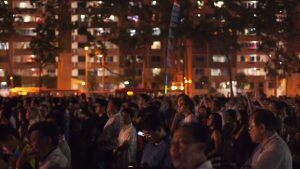GE2020 commentary: How PAP performed better in SMCs compared to GRCs
July 21, 2020

In Singapore’s 2020 general election (GE2020), the popular vote shifted against the ruling People’s Action Party (PAP) as compared to GE2015, while the Workers’ Party seized a second group representation constituency (GRC) – Sengkang GRC – and retained Aljunied GRC with a convincing margin of almost 20%.
In view of these results, Professor Ivan Png (NUS School of Business and Departments of Economics and Information Systems and Analytics) discusses how GRCs affect the performance of the PAP in elections in ‘GE2020 commentary: How PAP performed better in single member constituencies (SMCs) compared to GRCs in TodayOnline. Prof Png explains that GRCs were established for two reasons: to ensure sufficient minority representation in parliament, and to attract new talent into politics. Yet he finds – through multiple regression analysis – that in both GE2015 and GE2020, the PAP’s vote share was lower in GRCs relative to SMCs.
Prof Png explains that this finding could be seen in two ways. Firstly, the PAP’s weaker performance in the GRCs might have been the outcome of a deliberate strategy, as the PAP fielded stronger candidates in SMCs and assigned weaker candidates to ride on big-name ministers in the GRCs. Alternatively, the PAP’s weaker performance in the GRCs could be viewed as a conundrum that poses challenges to the PAP.
Prof Png explains these challenges and the appropriate responses by the PAP. Firstly, GRCs have provided opposition parties with leverage and this has backfired on the PAP. Given the size of GRCs, they present as attractive targets for opposition parties with capable candidates. Besides the victories of the Workers’ Party in Sengkang and Aljunied GRCs, the Progress Singapore Party had a closely fought contest over West Coast GRC and as a result gained two Non-Constituency Member of Parliament seats, having emerged the best loser in GE2020. Secondly, the PAP’s original assumptions of GRCs may no longer be valid. GRCs no longer seem to be required to promote minority representation. Furthermore, it seems that GRCs are not necessary for the entry of new politicians, as Yio Chu Kang and Marymount SMCs were both won by PAP first-timers.
To stop the swing against the PAP in GE2020, the government responded by reducing the size of GRCs in 2016, and increasing the number of SMCs. Through GE2020 results, Prof Png finds that this reorganisation strategy worked, as SMCs contributed a greater vote share to the PAP than GRCs. In future elections, Prof Png suggests that it would not be a surprise if Singaporeans see a further shrinkage of GRCs and more SMCs.
Read the full article here.
